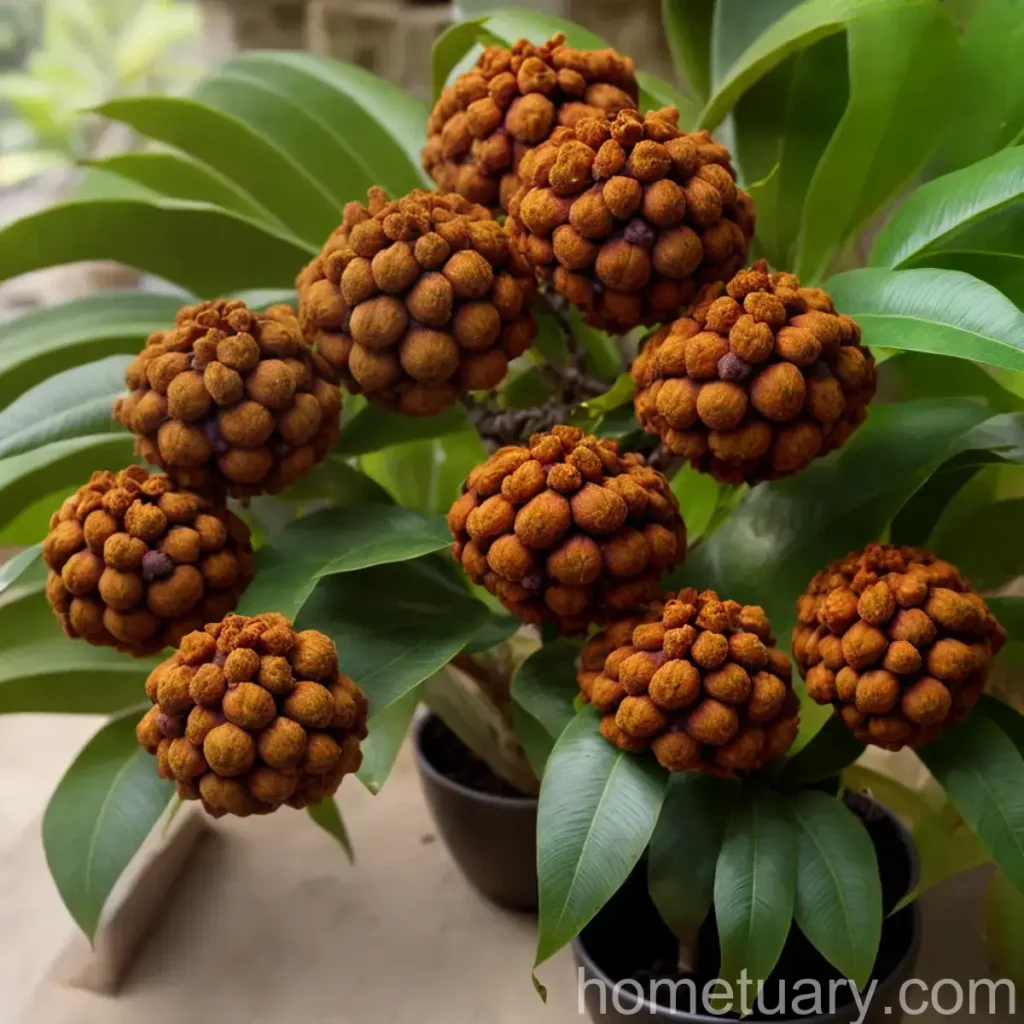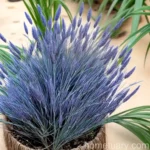The Mystical Rudraksha (Elaeocarpus Ganitrus): A Plant Scientist’s Guide
Introduction
Rudraksha, scientifically known as Elaeocarpus Ganitrus, is a unique plant that holds deep spiritual significance in Hinduism and Buddhism. It is not only revered for its cultural and ritualistic uses but also valued for its medicinal properties. As a plant scientist, I am excited to delve into the various aspects of Rudraksha, including its cultural significance, uses, growth requirements, care tips, and much more. In this comprehensive guide, we will explore the fascinating world of Rudraksha and unravel the mystique surrounding this sacred plant.
Understanding Rudraksha
Rudraksha is a large evergreen broad-leaved tree belonging to the Elaeocarpaceae family. It is native to the Himalayan region, as well as other parts of Southeast Asia, including Indonesia, Malaysia, and the Philippines. The tree is renowned for its distinctive blue fruits that contain the famous Rudraksha seeds, which hold immense religious and spiritual importance for millions of people.
Key Takeaways – Rudraksha (Elaeocarpus Ganitrus)
Before we delve into the specifics of the Rudraksha plant, let’s take a quick look at the key takeaways to set the stage for our exploration:
1. Rudraksha holds immense significance in Hinduism and Buddhism.
2. The plant is sought after for its therapeutic and healing properties.
3. It requires specific cultural conditions for optimal growth and development.
Culture of Rudraksha
Understanding the cultural and spiritual significance of Rudraksha is essential to appreciate its value beyond its biological attributes. The Rudraksha beads derived from the seeds of this plant are commonly used in traditional practices, meditation, and for their believed spiritual powers.
Rudraksha Significance
Rudraksha holds significant spiritual value in Hinduism and Buddhism. In Hindu mythology, it is believed to be associated with Lord Shiva and holds the essence of the cosmic universe. The sacred beads are considered to bestow divine protection, mental clarity, and spiritual enlightenment to the wearer. Similarly, in Buddhism, Rudraksha beads are utilized for meditation and spiritual healing.
Importance of Rudraksha in Hinduism
In Hinduism, Rudraksha is revered as a divine symbol that represents the tears of Lord Shiva. The seeds are believed to possess powerful cosmic energies and are seen as a connection to the divine realm.
Rudraksha Spiritual Significance in Buddhism
Buddhists consider Rudraksha beads as a source of tranquility and wisdom. They are used as meditation aids and are believed to aid in spiritual progression and mindfulness.
Uses of Rudraksha
The uses of Rudraksha extend beyond its spiritual significance to encompass its therapeutic properties and practical applications in various forms.
Rudraksha Healing Properties
Rudraksha seeds are believed to possess natural healing properties. They are used in Ayurveda, an ancient Indian medicinal system, for treating various physical and emotional ailments. It is also believed that wearing Rudraksha beads can help in alleviating stress and anxiety.
Rudraksha Medicinal Properties
The medicinal properties of Rudraksha seeds are attributed to their chemical composition, which includes alkaloids and other bioactive compounds. These properties are harnessed for their beneficial effects on the human body and mind.
Growth Requirements
To cultivate Rudraksha successfully, it is imperative to understand its specific growth requirements, including water, sunlight, soil, and other essential factors.
Water
Rudraksha thrives in well-drained soil with moderate watering. It is essential to maintain a balanced moisture level to ensure healthy growth without waterlogging the roots.
Sunlight
This plant exhibits a preference for partial to full sunlight. It is crucial to provide adequate sunlight for its photosynthetic processes while protecting it from scorching heat.
Soil
Rudraksha thrives in loamy, well-drained soil that is rich in organic matter. The soil should have good aeration and pH levels suitable for the plant’s optimal growth.
Fertilizer
Periodic fertilization with organic fertilizers can support the growth and development of Rudraksha. It is essential to provide balanced nutrients to promote healthy foliage and fruiting.
Plant Care
Rudraksha, like any other plant, requires proper care and maintenance to ensure its well-being and longevity. This involves pruning, disease prevention, and propagation techniques.
Pruning
Regular pruning is essential to shape the plant, remove diseased or damaged parts, and encourage new growth. Pruning also helps in maintaining the overall health and aesthetics of the Rudraksha tree.
Propagation
Rudraksha can be propagated through seeds and vegetative methods such as grafting and air-layering. Selecting healthy seeds or plant material is crucial for successful propagation.
Container Cultivation
For those interested in growing Rudraksha in containers, it is possible with proper care and attention. Selecting the right-sized container and providing adequate soil, sunlight, and water are essential for container cultivation.
Common Diseases and Pests
Understanding the potential diseases and pests that can affect Rudraksha is crucial for its effective management and maintenance.
Common Diseases
Rudraksha is susceptible to fungal diseases such as powdery mildew, leaf spot, and root rot, especially under conditions of high humidity and poor air circulation.
Disease Diagnosis
Early detection and proper diagnosis of diseases are crucial for timely intervention. Regular inspection of the plant for symptoms such as wilting, discoloration, or unusual growth patterns is necessary.
Common Pests
While Rudraksha is relatively resistant to pests, it may occasionally be affected by insects such as aphids, scales, and mealybugs, especially in stressed or unhealthy plants.
Botanist’s Tips
As a plant scientist, I have specific tips and recommendations for the successful cultivation and care of Rudraksha based on scientific principles and practical expertise.
Rudraksha Plant Care Tips
- Provide well-drained soil and moderate watering to prevent waterlogging.
- Ensure adequate sunlight without overexposure to direct heat.
- Implement proper pruning techniques to maintain the tree’s shape and health.
- Monitor the plant for any signs of diseases or pests and take prompt action if detected.
Rudraksha Cultivation Techniques
- Choose healthy seeds or plant material for propagation to ensure robust growth.
- Follow recommended fertilization practices to support the plant’s nutritional needs.
- Incorporate organic mulching to conserve soil moisture and enhance soil fertility.
Fun Facts about Rudraksha
With its rich cultural heritage and intriguing botanical characteristics, Rudraksha offers several fascinating and little-known facts.
- Rudraksha beads are used in jewelry and accessories for their religious and aesthetic appeal.
- The number of faces or facets on a Rudraksha bead is believed to have specific spiritual significance.
- Rudraksha trees can grow to impressive heights and have a commanding presence in their natural habitat.
Links to External Resources
For further exploration and detailed information about Rudraksha, I recommend the following sources:
1. Rudraksha: History and Benefits
2. The Spiritual Significance of Rudraksha
3. Rudraksha: The Tears of Lord Shiva
In conclusion, Rudraksha (Elaeocarpus Ganitrus) stands as a testament to the seamless integration of nature, culture, and spirituality. Its enigmatic allure and profound symbolism continue to captivate the imagination of people worldwide. As a plant scientist, I am continually inspired by the intricate relationship between plants and human beliefs, and Rudraksha exemplifies this connection in the most extraordinary manner. The journey of discovery and understanding of Rudraksha is an enriching experience that unveils the profundity of the botanical world and its transcendental significance.
Keywords: Rudraksha significance, Elaeocarpus Ganitrus benefits, Types of Rudraksha, Rudraksha seeds, Elaeocarpus Ganitrus tree, Rudraksha healing properties, How to wear Rudraksha, Rudraksha beads, Elaeocarpus Ganitrus uses, Rudraksha spiritual significance, Importance of Rudraksha in Hinduism, Elaeocarpus Ganitrus tree features, Rudraksha seed benefits, Rudraksha origin, Elaeocarpus Ganitrus cultivation, Rudraksha medicinal properties, Rudraksha symbolism, Elaeocarpus Ganitrus plant care, Rudraksha for meditation, Rudraksha and chakras, Elaeocarpus Ganitrus tree facts, Rudraksha in Ayurveda, Rudraksha scientific name, Elaeocarpus Ganitrus flower, Rudraksha spiritual mala, Rudraksha tree species, Elaeocarpus Ganitrus tree cultivation, Rudraksha divine properties, Rudraksha necklace, Elaeocarpus Ganitrus tree symbolism, Rudraksha and astrology, Rudraksha fertility benefits, Elaeocarpus Ganitrus tree uses, Rudraksha sacred beads, Rudraksha divine connection, Elaeocarpus Ganitrus tree care tips, Rudraksha seed oil, Rudraksha spiritual significance in Buddhism, Elaeocarpus Ganitrus tree importance, Rudraksha for stress relief, Rudraksha spiritual healing, Elaeocarpus Ganitrus tree ecosystem, Rudraksha and spirituality, Rudraksha beads benefits, Elaeocarpus Ganitrus tree cultivation techniques, Rudraksha power beads, Rudraksha for mental clarity, Elaeocarpus Ganitrus tree significance in Hindu mythology, Rudraksha for emotional balance, Rudraksha plant symbolism















